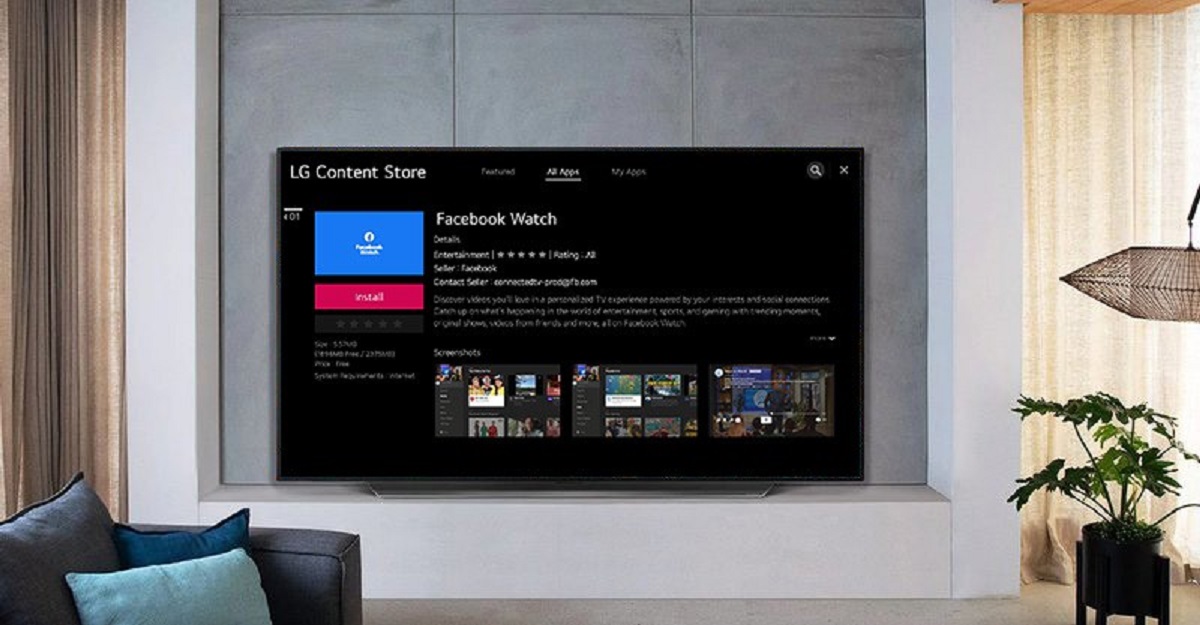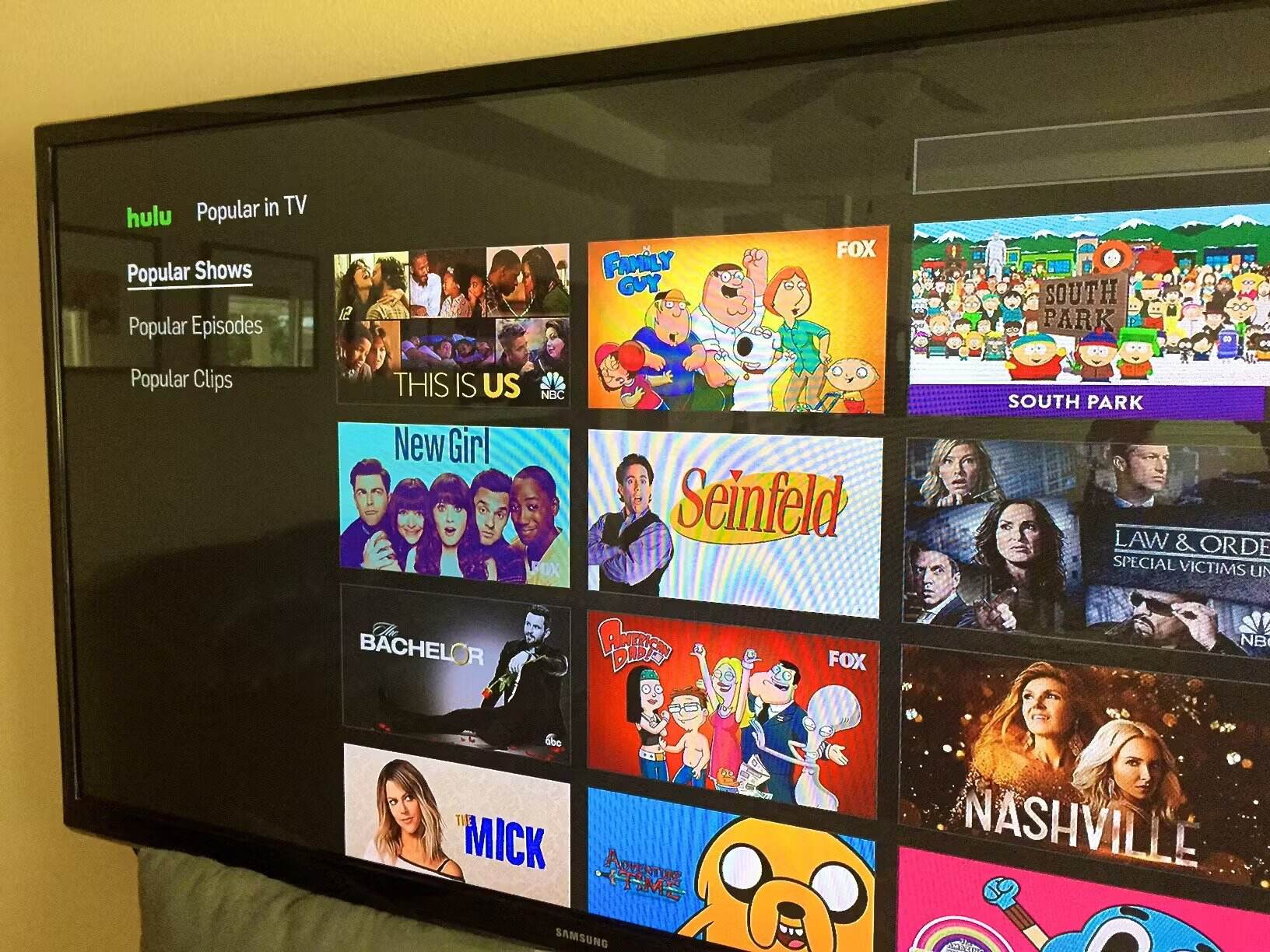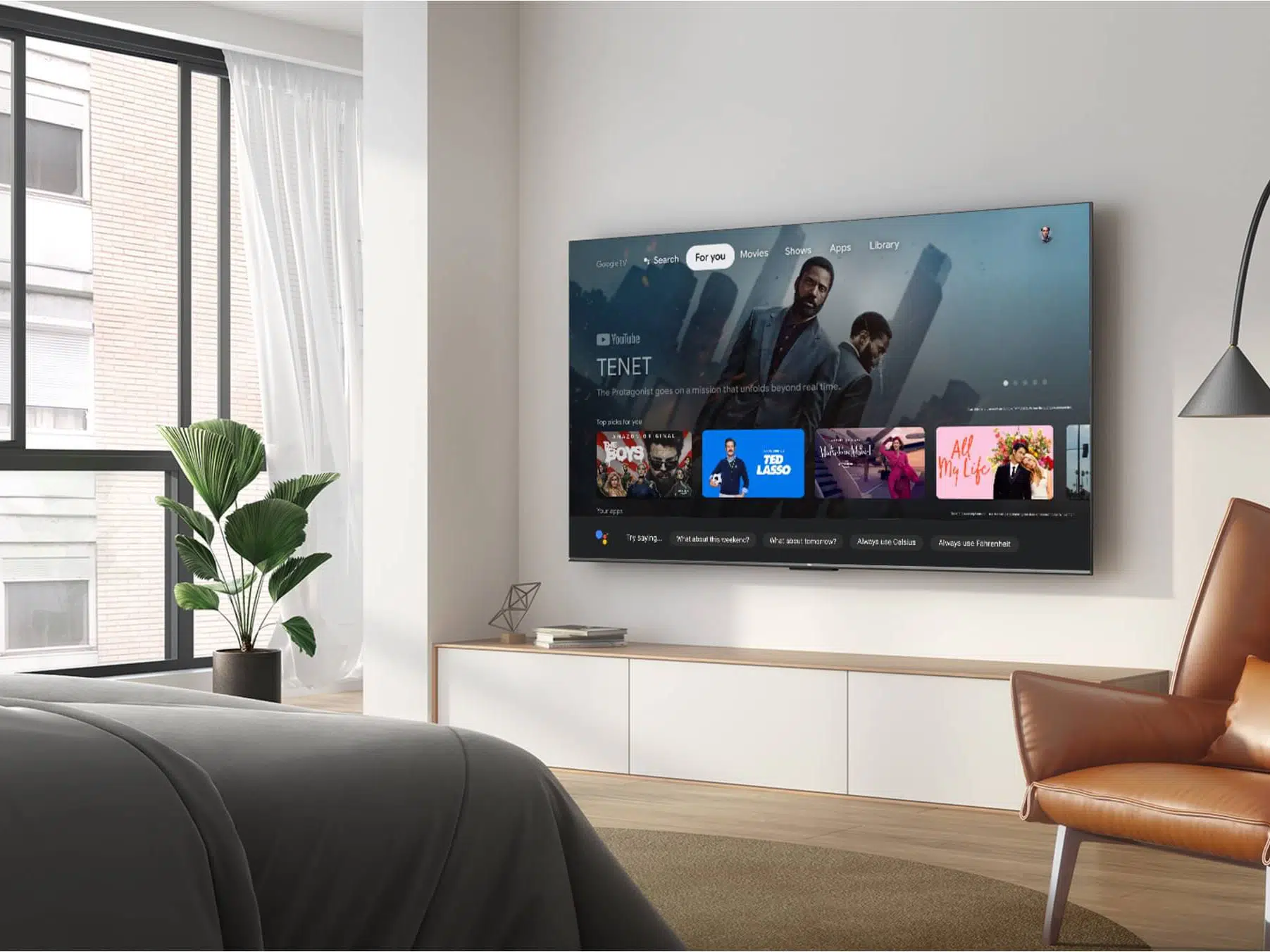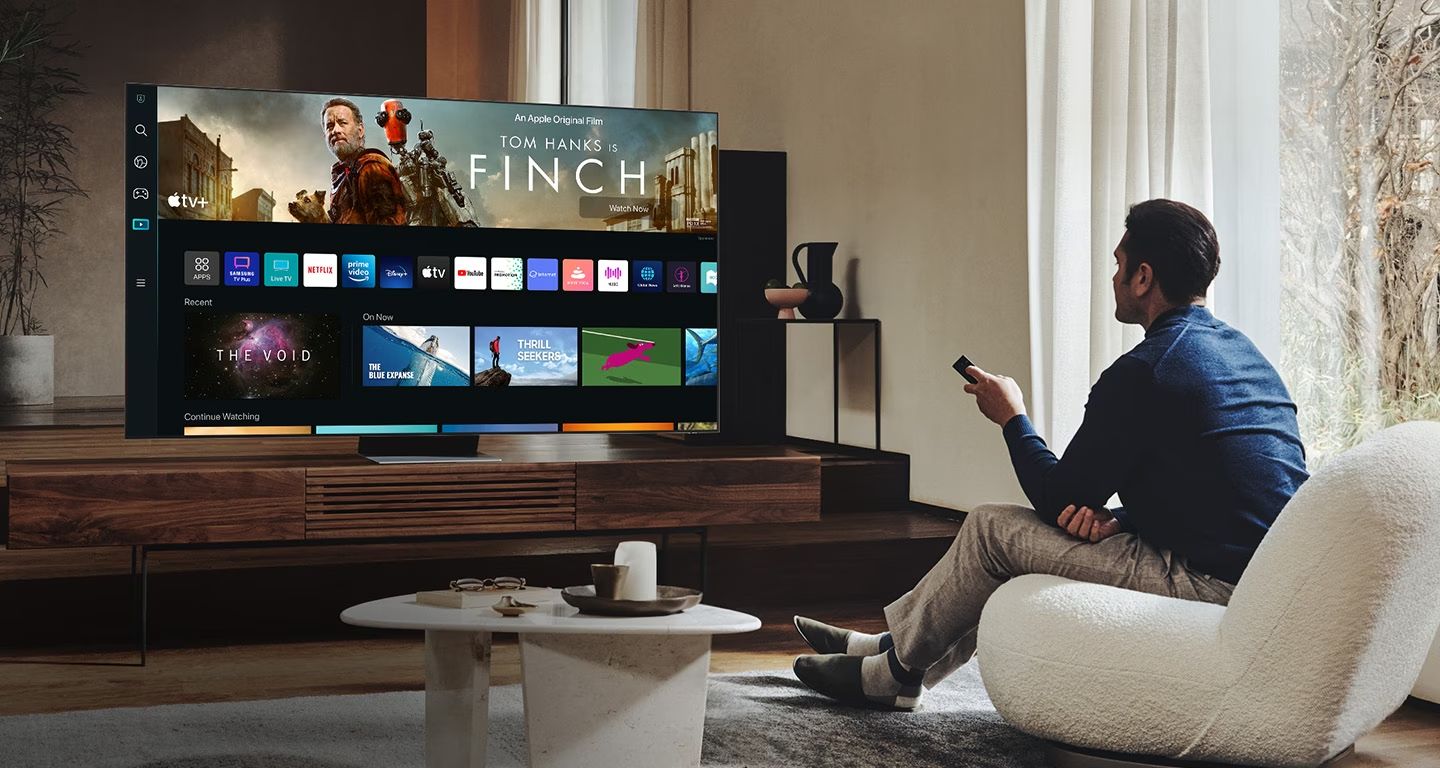Introduction
Welcome to the world of internet TV, where traditional television meets the convenience and flexibility of the internet. With the evolution of technology, watching TV has transformed into a more personalized and on-demand experience. Gone are the days of being tied to a set schedule or limited channel selection. Internet TV allows you to stream your favorite shows, movies, and live events whenever and wherever you want.
Internet TV, also known as streaming television, is the delivery of video content through internet protocol networks. It provides users with the ability to access a wide range of programming, including movies, TV series, sports events, and live TV channels, through various devices such as smartphones, tablets, smart TVs, and streaming devices.
One of the key advantages of internet TV is the freedom it offers. You are no longer confined to traditional cable or satellite TV subscriptions with fixed channel lineups. Internet TV services present a vast library of content that you can choose from, ranging from popular TV shows and movies to exclusive series produced by streaming platforms.
Moreover, internet TV allows you to watch your favorite shows on your own schedule. Unlike traditional TV where you have to tune in at a specific time, internet TV platforms offer on-demand content, so you can watch your preferred programs whenever it suits you. Whether you want to binge-watch a whole season in one sitting or catch up on missed episodes, internet TV makes it possible.
Another advantage of internet TV is the portability. With the rise of smartphones and tablets, you can take your favorite shows with you wherever you go. Whether you’re traveling, waiting for an appointment, or simply relaxing at home, you can stream your desired content on your mobile device and enjoy uninterrupted entertainment.
In the following sections, we will guide you through the process of watching TV with the internet. From understanding how internet TV works to choosing the right service provider, selecting the appropriate streaming device, and accessing content, we will cover everything you need to know to enhance your internet TV experience.
Section 1: Understanding Internet TV
Internet TV operates on the principle of streaming, where video content is transmitted over the internet in real-time or downloaded for later viewing. Unlike traditional broadcast television, internet TV allows viewers to access content on-demand, eliminating the need for fixed programming schedules.
There are two main types of internet TV services: free and subscription-based. Free internet TV services, such as YouTube, offer a wide range of user-generated content, including videos, vlogs, and tutorials. On the other hand, subscription-based internet TV services, commonly known as streaming platforms, require a monthly or annual fee for access to premium content.
Streaming platforms, like Netflix, Amazon Prime Video, and Hulu, have revolutionized the way we consume television. These platforms license TV shows, movies, and documentaries from various production studios and make them available to subscribers for streaming. In addition to traditional content, many streaming platforms also produce their own exclusive series and movies, known as original programming, that can only be found on their platforms.
One of the key advantages of internet TV is the vast variety of content available. You can choose from a wide selection of genres, including drama, comedy, action, sci-fi, documentaries, and more. Internet TV platforms often offer personalized recommendations based on your viewing history, helping you discover new shows and movies that match your interests.
Another benefit of internet TV is the option to watch content from different countries and cultures. With international streaming platforms, you can access TV shows and movies from around the world, allowing you to explore diverse storytelling styles and perspectives. This globalization of content opens up a world of entertainment possibilities.
Internet TV is not limited to TVs alone. You can also access streaming platforms and free internet TV services on other devices like smartphones, tablets, laptops, and smart TVs. This flexibility ensures that you can enjoy your favorite shows and movies wherever you are, on any compatible device.
Overall, understanding internet TV is crucial in navigating the world of online entertainment. With its convenience, diverse content, and personalized recommendations, internet TV offers a new way to consume television that fits your lifestyle and preferences.
Section 2: Choosing an Internet TV Service Provider
Choosing the right internet TV service provider is essential for a satisfying streaming experience. With numerous options available, it’s important to consider factors such as content library, subscription plans, device compatibility, and user interface before making a decision.
One of the first things to consider when choosing an internet TV service provider is the content library. Assess the types of TV shows, movies, and documentaries available on each platform. Look for platforms that offer a wide range of genres and a diverse selection of content that aligns with your interests.
Subscription plans are another crucial consideration. Evaluate the pricing structure and determine whether the subscription fee is within your budget. Some platforms offer different tiers of subscriptions, allowing you to choose the one that best suits your needs. Additionally, keep an eye out for any free trial periods or promotional offers that can help you test the service before committing.
Consider the compatibility of the platform with your devices. Ensure that the internet TV service you choose is available on the devices you plan to use for streaming, such as smartphones, tablets, smart TVs, or streaming devices. Check if the platform has dedicated apps for your devices or if it can be accessed through a web browser.
An intuitive and user-friendly interface is essential for seamless navigation and ease of use. Look for platforms that have a well-designed interface, allowing you to easily search for content, create personalized watchlists, and access additional features. A clean and organized user interface can greatly enhance your streaming experience.
Another factor to consider is the availability of simultaneous streaming. If you have multiple household members who will be using the internet TV service at the same time, look for platforms that allow multiple streams on different devices. This ensures that everyone can enjoy their preferred shows without any conflicts.
Lastly, read reviews and consider the reputation of the internet TV service provider. Look for feedback from current subscribers to understand their experiences with the platform. Take note of any reported issues such as buffering, technical glitches, or customer service problems. Choosing a provider with a strong reputation can help ensure a more reliable and enjoyable streaming experience.
By considering these factors and conducting thorough research, you can choose the internet TV service provider that best meets your needs and preferences. Remember to take your time, weigh the options, and select a service that aligns with your budget, content preferences, and device requirements.
Section 3: Internet TV Devices and Streaming Platforms
Internet TV devices and streaming platforms play a vital role in accessing and enjoying your favorite content. Understanding the various options available in the market can help you make an informed decision for optimal streaming experience.
Streaming platforms are online services that provide access to a diverse range of TV shows, movies, and other content. Some popular streaming platforms include Netflix, Amazon Prime Video, Hulu, Disney+, and HBO Max. These platforms require a subscription and can be accessed through their dedicated apps or websites.
In addition to streaming platforms, there are also dedicated internet TV devices that allow you to stream content on your TV. These devices, such as Roku, Apple TV, Amazon Fire TV Stick, and Google Chromecast, connect to your television and provide a user-friendly interface for accessing streaming services. They often come with remote controls, voice command features, and the ability to install various streaming apps.
Most smart TVs manufactured today have built-in streaming capabilities, allowing you to access popular streaming platforms directly on your television without the need for an external device. These smart TVs are equipped with Wi-Fi connectivity and pre-installed apps like Netflix, Hulu, and YouTube, making it convenient to stream content directly from the television.
One thing to consider when choosing an internet TV device or streaming platform is compatibility. Ensure that the device or platform supports the streaming services you want to use. Check for app availability and compatibility with your TV or other devices.
Another essential aspect to consider is the user interface. Look for devices or platforms with easy-to-navigate menus, smooth scrolling, and organized content categorization. A user-friendly interface enhances your browsing experience and makes it easier to find and enjoy your favorite shows and movies.
Some streaming platforms offer additional features like personalized recommendations, curated playlists, and the ability to create multiple user profiles. These features can enhance your streaming experience and provide tailored content suggestions based on your viewing history and preferences.
It’s also worth considering the streaming quality and resolution supported by the device or platform. Look for devices and platforms that offer high-definition (HD) and 4K Ultra HD streaming options if you want to enjoy content in the best possible quality. Additionally, check if the device supports surround sound or Dolby Atmos for an immersive audio experience.
Lastly, consider any additional features or services offered by the devices or platforms. Some devices may have built-in gaming capabilities, allowing you to play casual games on your TV. Others may offer integration with digital assistants like Alexa or Google Assistant for voice control functionality.
By understanding the different internet TV devices and streaming platforms available, you can choose the option that best suits your preferences, budget, and compatibility needs. Whether you opt for a streaming platform or a dedicated device, these tools will greatly enhance your ability to access and enjoy a wide range of content.
Section 4: Setting Up Your Internet TV System
Setting up your internet TV system involves a few necessary steps to ensure a smooth and hassle-free streaming experience. From connecting your devices to configuring the necessary settings, here’s a guide to help you get your internet TV system up and running.
The first step is to ensure that you have a stable internet connection. Internet TV relies on a high-speed internet connection to stream content without interruptions. Verify that your internet service provider offers sufficient bandwidth for streaming and consider upgrading your plan if needed.
Next, connect your internet TV device or smart TV to your television using the appropriate cables. For devices like Roku or Amazon Fire TV Stick, simply plug the device into an available HDMI port on your TV. If you’re using a smart TV, ensure that it is connected to your Wi-Fi network to access the streaming apps.
Once the physical connections are made, power on your TV and your internet TV device. Follow the instructions provided with the device or TV to complete the initial setup process. This may involve signing in with your streaming platform accounts or linking the device to your existing accounts.
After the initial setup, you’ll want to configure the display and audio settings. Access your TV’s settings menu and adjust the display resolution to match the capabilities of your TV. You may also want to enable features like HDR (High Dynamic Range) or adjust the color and contrast settings for optimal viewing.
For audio, ensure that your TV is correctly connected to an audio system, if desired. This could be a soundbar, home theater system, or external speakers. Configure the audio settings on both your TV and the connected audio system to ensure proper sound output.
Next, you’ll want to install the necessary streaming apps on your internet TV device or smart TV. Navigate to the app store on your device and search for the streaming platforms you want to use. Download and install the apps, and log in to your accounts if prompted. Some devices may have pre-installed apps, so check for those as well.
Once your streaming apps are installed and configured, take some time to explore the features and settings available. Customize your preferences, set up personalized watchlists, and familiarize yourself with the interface of each app. Some apps may offer options for parental controls, closed captions, or language preferences.
Lastly, ensure that your internet TV system is up to date. Check for any firmware updates for your internet TV device or smart TV. These updates often include bug fixes, performance improvements, and new features that enhance your streaming experience.
With your internet TV system now properly set up, you’re ready to start enjoying your favorite shows, movies, and more! Keep in mind that you may need to revisit these settings periodically to make adjustments or update apps as new versions are released.
Section 5: Finding and Accessing Content
Now that your internet TV system is set up, it’s time to find and access the content you want to watch. With the vast array of shows, movies, and documentaries available on streaming platforms, knowing how to discover and access content efficiently is key to maximizing your streaming experience.
One of the primary ways to find content is through the search function offered by streaming platforms. Use keywords, titles, or actor/actress names to search for specific shows or movies. The search results will provide you with a list of relevant content that matches your query, making it easier to find what you’re looking for.
Most streaming platforms also offer curated categories and genres to help you explore content based on your interests. These categories may include popular TV shows, trending movies, recommended for you, or genre-specific collections. Take advantage of these curated lists to discover new content that you may not have come across otherwise.
Another method of finding content is through recommendations. Many streaming platforms provide personalized recommendations based on your viewing history and preferences. These recommendations can appear on the homepage or in dedicated sections, helping you find new shows or movies to watch based on your previous streaming activity.
When browsing through content, take advantage of the additional information provided. Read the synopsis, view the cast and crew details, and check out user reviews and ratings. This information can help you determine whether a particular show or movie is worth your time and can aid in deciding what to add to your watchlist.
Creating a watchlist is a convenient way to keep track of shows and movies you want to watch in the future. Most streaming platforms allow you to add content to your watchlist with a simple click or tap. This feature ensures that you won’t forget about shows or movies that catch your interest, saving you time when deciding what to watch next.
Accessibility features are also crucial when it comes to finding and accessing content. Streaming platforms often offer features like subtitles, closed captions, and audio descriptions to cater to viewers with hearing or visual impairments. Explore the settings menu of the streaming apps to adjust these accessibility options according to your needs.
One often overlooked method of finding content is word of mouth. Talk to friends, family, and colleagues about their favorite shows or movies. They may recommend hidden gems or popular titles that you haven’t discovered yet. Sharing recommendations and engaging in discussions about TV shows and movies can enhance your streaming experience and open you up to new possibilities.
With these methods and tools, you can efficiently find and access the content you want to watch on your internet TV system. Whether you’re searching for a specific show, exploring curated categories, or relying on personalized recommendations, the world of streaming is at your fingertips.
Section 6: Tips and Tricks for Optimal Internet TV Experience
To enhance your internet TV experience, here are some helpful tips and tricks that can further improve your streaming enjoyment:
1. Reliable Internet Connection: Ensure that you have a stable and high-speed internet connection to avoid buffering and interruptions. If your streaming quality is poor, consider upgrading your internet plan or optimizing your Wi-Fi network for better performance.
2. Use Ethernet Connection: If possible, connect your internet TV device directly to your router using an Ethernet cable. Wired connections offer a more stable and consistent connection compared to Wi-Fi, especially when streaming high-quality content.
3. Close Background Apps: Close any unnecessary apps or programs running in the background on your streaming device. Background apps can consume resources and affect the performance of your device, leading to slower streaming and potential buffering issues.
4. Regularly Clear Cache: Clearing the cache on your internet TV device or clearing the browser data on your smart TV can help improve performance. Cache buildup can slow down your device, so it’s recommended to clear it periodically.
5. Optimize Picture Settings: Spend some time adjusting the picture settings on your TV or streaming device to optimize the display quality. Play around with settings such as brightness, contrast, color calibration, and sharpness to find the best visual experience.
6. Activate Parental Controls: If you have children at home, make use of parental control features offered by streaming platforms. Set up age restrictions and content filters to ensure that your children only have access to appropriate content.
7. Take Advantage of Free Trials: Many streaming platforms offer free trial periods. Use this opportunity to explore different platforms and assess which one best suits your needs and preferences before committing to a subscription.
8. Check for Exclusive Content: Keep an eye out for streaming platforms that offer exclusive content or original programming. These platforms often produce high-quality shows and movies that cannot be found elsewhere.
9. Explore Different Genres: Don’t limit yourself to a specific genre. Explore shows and movies from various genres to broaden your horizons and discover hidden gems that you might not have considered otherwise.
10. Update Apps and Firmware: Regularly update the streaming apps on your internet TV device or smart TV to ensure that you have access to the latest features and bug fixes. Similarly, keep your device firmware up to date for optimal performance and compatibility.
11. Customize Subtitle Options: Adjust the subtitle settings on your streaming apps to your preferences. You can change the font size, style, and color, as well as the positioning on the screen, to make sure subtitles are comfortable to read and complement your viewing experience.
12. Engage in Community Discussions: Participate in online forums, social media groups, or dedicated communities where you can discuss TV shows and movies with fellow enthusiasts. It’s a great way to exchange recommendations, insights, and opinions, and discover new content.
By applying these tips and tricks, you can enhance your internet TV experience, ensuring smooth streaming, optimal picture quality, and a wide selection of content to choose from. Happy streaming!
Section 7: Advantages and Disadvantages of Internet TV
Internet TV offers numerous advantages and benefits, but it also comes with its share of drawbacks. Understanding the advantages and disadvantages of internet TV can help you make an informed decision about whether it is the right choice for your entertainment needs.
Advantages:
1. On-Demand Viewing: One of the significant advantages of internet TV is the ability to watch content on-demand. You have the flexibility to choose what you want to watch, when you want to watch it. No longer bound by programming schedules, you can binge-watch entire seasons or catch up on missed episodes at your convenience.
2. Wide Content Variety: Internet TV offers a vast library of content, including TV shows, movies, documentaries, and exclusive programming. You have access to a diverse range of genres and international content, exposing you to new shows, movies, and cultural perspectives that you may not have encountered through traditional TV.
3. Flexibility and Portability: With internet TV, you can watch your favorite shows and movies on various devices, including smartphones, tablets, laptops, and smart TVs. This portability allows you to enjoy your preferred content while traveling or on-the-go, as long as you have an internet connection.
4. Personalized Recommendations: Streaming platforms often provide personalized recommendations based on your viewing history and preferences. This helps you discover new shows and movies that align with your interests, making it easier to find content that you’re likely to enjoy.
5. Cost-Effective: Internet TV can be more cost-effective compared to traditional cable or satellite TV packages. Many streaming platforms offer affordable subscription plans, and you have the flexibility to choose and pay only for the content you want to watch. Additionally, you can save on equipment rentals and installation fees.
Disadvantages:
1. Internet Dependence: A reliable and high-speed internet connection is essential for smooth streaming. If your internet connection is slow or unstable, it can lead to buffering, interruptions, and overall frustration while trying to watch your favorite shows or movies.
2. Content Availability: While streaming platforms offer a vast selection of content, you may not have access to certain TV shows, movies, or live events due to licensing agreements. Some content may be exclusive to specific platforms, requiring multiple subscriptions to access everything you want to watch.
3. Quality and Bandwidth: Streaming high-quality content, especially in 4K or HDR resolution, requires a significant amount of bandwidth. If you have a data cap on your internet plan or multiple users streaming simultaneously, it may affect the quality of your streaming or result in additional charges from your internet service provider.
4. Limited Offline Access: Streaming platforms primarily rely on an internet connection for content playback. While some platforms offer limited offline downloading options, not all shows and movies are available for offline viewing. This can be a limitation when you’re in an area with poor or no internet connectivity.
5. Initial Setup and Learning Curve: Setting up an internet TV system and getting familiar with different streaming platforms can involve a learning curve. It may take some time to understand the features, interface, and settings of various devices and apps. Additionally, troubleshooting technical issues may require some tech-savviness.
By understanding both the advantages and disadvantages of internet TV, you can make an informed decision about whether it aligns with your preferences, needs, and constraints. Although internet TV offers numerous conveniences and an extensive library of content, it’s essential to consider the potential limitations and drawbacks as well.
Conclusion
Internet TV has revolutionized the way we consume television, providing flexibility, convenience, and an extensive library of content at our fingertips. With the ability to stream TV shows, movies, and live events on demand, internet TV offers a personalized viewing experience tailored to our preferences and schedules.
Throughout this article, we’ve explored the different aspects of internet TV, from understanding how it works to choosing the right service provider, setting up the system, finding and accessing content, and optimizing the streaming experience. We’ve also discussed the advantages of internet TV, including on-demand viewing, a wide variety of content, flexibility, and personalized recommendations.
However, it’s important to acknowledge the disadvantages of internet TV as well, such as the dependence on a stable internet connection, limited content availability, and potential quality and bandwidth limitations. It’s crucial to consider these factors when deciding whether internet TV is the right fit for your entertainment needs and circumstances.
In conclusion, internet TV offers a new era of television watching, providing viewers with unparalleled control and convenience. By embracing the benefits of internet TV and being mindful of its limitations, you can transform your TV viewing experience and unlock a world of entertainment possibilities.

























